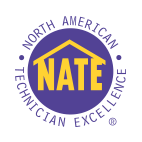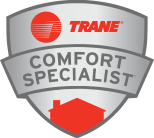The furnaces you can buy these days in Salt Lake City are all much more energy efficient than those available even 10 years ago. However, that doesn’t mean that all of the current models are created equal. There is still a pretty big variation when it comes to energy efficiency and when it comes to price, so you need to really know what you’re looking for if you want to get the best deal out there.
The first thing you should understand when you’re trying to pick out a furnace is how energy efficiency for this type of equipment it measured. All furnaces come with an annual fuel utilization efficiency (AFUE) rating that reflects just exactly how energy efficient they are.
Any furnace you buy today will have an AFUE of at least 80%, but it’s possible to purchase models with AFUEs of 97% or more. Of course, energy efficiency is generally a good thing, but there are some other things to consider when you’re trying to decide just how energy efficient you need your new furnace to be.
What this calculation really comes down to is how much you’ll be able to save monthly and annually with a higher efficiency furnace. While your heating bills will certainly be lower the higher the furnace’s efficiency is, you will also pay more up front for the highest efficiency models.
This higher purchase price may be worth it, however, if you live in an area with particularly harsh winters. If your heating load is very high and you’ll be using your furnace a lot, your monthly savings will make up for the higher initial price of the high efficiency furnace in a reasonable amount of time.
However, if you live in an area with relatively mild winters and you won’t be demanding a whole lot of your furnace, then the amount you’ll save each month with the highest efficiency models really won’t add up to much.
Keep in mind that a furnace with an 80% AFUE is still quite efficient and will almost certainly save you a considerable amount monthly when compared to the unit you’re currently using. And because 80% AFUE furnaces are so much cheaper than those with upper 90% AFUE ratings, they often wind up as the more cost effective alternative overall.
Read full article
Tags: Furnace Installation, Heating, Heating Installation, Salt Lake City, UT
Posted in Heating | Comments Off on How Much Will a High Efficiency Furnace Save Me?


